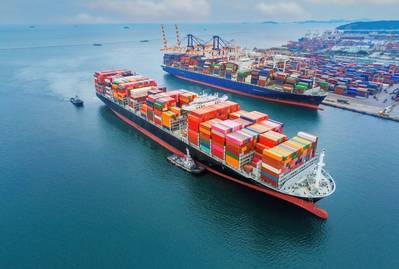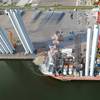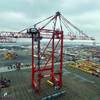Call for Stricter Regulation of Scrubber Washwater
The combined emissions of metals and other environmentally hazardous substances from ships is putting the marine environment at risk according to a new study from Chalmers University of Technology, Sweden.
The researchers calculated the contaminant load from these emissions into the marine environment in four ports, and found that water discharged from ships’ scrubbers accounts for most of the contaminants.
“The results speak for themselves. Stricter regulation of discharge water from scrubbers is crucial to reduce the deterioration of the marine environment,” says Anna Lunde Hermansson, a doctoral student at the Department of Mechanics and Maritime Sciences at Chalmers.
“A single ship is responsible for many different types of emissions. These include greywater and blackwater, meaning discharges from showers, toilets and drains, antifouling paint, and scrubber discharge water. That is why it’s important to look at the cumulative environmental risk in ports,” says Lunde Hermansson who, with colleagues Ida-Maja Hassellöv and Erik Ytreberg, is behind the new study that looked at emissions from shipping from a cumulative perspective.
The researchers found that three out of the four port environments were prone to unacceptable risks according to the assessment model used. They also saw that it was emissions from antifouling paint and scrubber discharge water that accounted for the highest levels of hazardous substances in the marine environment and had the highest contribution to the risk. More than 90% of the environmentally hazardous metals and PAHs (polycyclic aromatic hydrocarbons) came from scrubber discharge water, while antifouling paints accounted for the biggest load of copper and zinc.
“If you look at only one emissions source, the risk level for environmental damage may be low or acceptable. But if you combine multiple individual emissions sources, you get an unacceptable risk. The marine organisms that are exposed to contaminants and toxins don’t care about where the contaminants come from, it is the total load that causes the damage,” says Lunde Hermansson.
The shipping industry has responded to concerns raised by previous studies, with a number of ports globally are already restricting discharge of washwater. The Vancouver Fraser Port Authority, for example, introduced restrictions effective from March 1, 2022.
Additionally, the IMO’s MEPC 78 meeting last year considered the outcomes from the IMO’s Sub-Committee on Prevention of Pollution meeting (PPR 9) which included draft Guidelines for risk and impact assessments of scrubber washwater and draft guidance on port reception facilities. The MEPC approved:
MEPC Circular on 2022 Guidelines for risk and impact assessments of the discharge water from exhaust gas cleaning systems, to provide information on recommended methodology for risk and impact assessments that Member States should follow when considering local or regional regulations to protect the sensitive waters/environment from washwater discharges.
MEPC Circular on 2022 Guidance regarding the delivery of EGCS residues to port reception facilities, providing best practices intended to assist both ship operators and port States in assuring the proper management and disposal of washwater residues and stored discharge water from scrubbers into port reception facilities.
In 2021, MEPC adopted the updated Guidelines for exhaust gas cleaning systems (MEPC.340(77)), which specify the criteria for the testing, survey, certification and verification of scrubbers as well as discharge water quality criteria.













